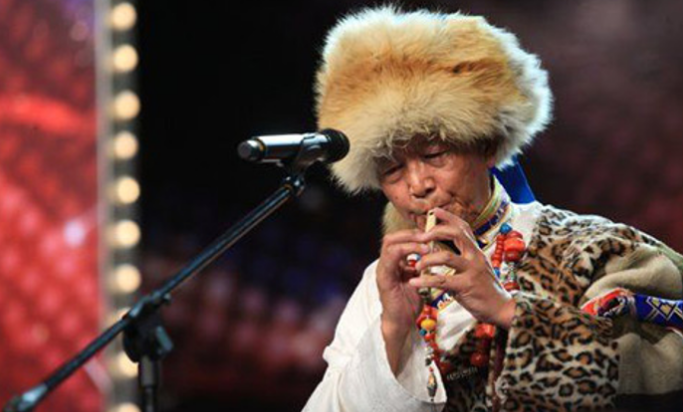Project Acceptance Meeting of "Production of Traditional Tibetan Musical Instrument Eagle Flute"
On December 5, 2021, the acceptance meeting and achievement handover ceremony of the "Tibetan Traditional Musical Instrument Eagle Flute Production" project was held at the Tibet Autonomous Region Ethnic Art Institute. Wang Min, deputy county magistrate of Jiali County, Juega, dean of the Art College of Tibet University, Zidan, a first-level performer of the Song and Dance Ensemble of the Tibet Autonomous Region, Numu, director of the Tibet Autonomous Region Ethnic Art Institute, and Phuntso Yundan, deputy director, Jiali The relevant person in charge of the County Culture and Tourism Bureau and the eagle flute production project team attended the meeting.
"The skill of playing the eagle flute has been included in the list of intangible cultural heritage at the autonomous region level. The old, middle and young generations all have inheritors, achieving intergenerational inheritance. There are Tibet University Art College, Tibet Autonomous Region Song and Dance Troupe, and Jiali County Art Troupe. Three training bases."

At the meeting, the experts comprehensively appraised the production process and effectiveness of the eagle flute by listening to the project team's report, performing live performances, and consulting materials, and solemnly wrote their own acceptance opinions: "The project results meet the production requirements, and the regulations are completed. Afterwards, the commissioning unit (Tibet Autonomous Region Ethnic Art Research Institute) and the contractor (Jiali County, Nagqu City) handed over the project results (38 well-made eagle flutes) and held a discussion on how to maximize the benefits .
After the discussion, all parties reached a preliminary consensus: they will strive to share the project results, maximize the benefits of the project results, actively explore alternative products for the raw materials of the eagle flute, and make the eagle flute an effective communication carrier for the socialization and popularization of Tibetan folk music and art. In-depth academic research, excavating the historical facts of the exchanges and integration of various ethnic groups in the inheritance and development of the eagle flute, highlighting the common symbols of the Chinese nation, and forging a sense of community of the Chinese nation.
Involving musical instruments
Guess you like
Hot news
- 01 The plucked type of common ethnic musical instruments in Xinjiang
- 02 The difference between the five-stringed lute and the four-stringed lute
- 03 Dulcimer exam and performance repertoire
- 04 The handsome guy in 1997 is so advanced in pulling erhu! Netizen: Come and "wash your ears"
- 05 The Simple Difference Between Guqin, Se, and Guzheng
 渝公网安备 50010702504639号
渝公网安备 50010702504639号